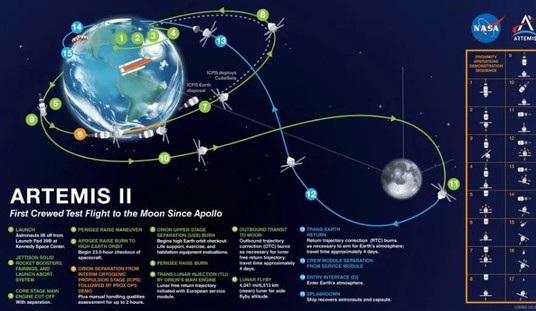The nice thing about bad news in early voting is that it’s correctable. If you’re a Republican in Nevada who was iffy about turning out because you thought Trump could win the state without you, here’s your wake-up call. Ralston is probably the most respected political reporter in Nevada, well-practiced at analyzing trends in early voting in election cycles. He sounds awfully sure about Democratic victory right now, given how things have gone so far — with one major caveat.
Trump almost surely is losing Nevada and remains likely to lose it, unless voting patterns are very different from 2012 – that is, unless Hillary Clinton is hemorrhaging her base more than Donald Trump and indies are voting big for him. Neither of those things seems likely, and both are contradicted by polls.
Republicans have to hope for a big last five days and a game-changing Election Day…
Breakdown [of early voting so far] is: 44 percent Dem, 36 percent GOP and 20 percent indies. That’s almost exactly what the final numbers after Election Day looked like in 2012. (Indie turnout is running about a dozen points behind major party turnout.)
The caveat is that we don’t know how early voters are voting, of course, only what their party registration is. It could be that there’s an unusual number of Democrats in Nevada crossing the aisle for Trump this year and/or an unusual number of independents tilting right compared to 2012. But that’s not how you’d bet, at least among Dems: People who turn out early tend to be hardcore partisans who want to get their ballot in ASAP. If an upset was brewing in Nevada, you’d expect to see a higher than expected number of Republicans out early. Ralston is confident enough in what the current trends mean to have dropped this pair of tweets this morning:
Consider this based on NV early #s:
Even if Trump holds 90% of base (um, no) and wins indies by 20 (not gonna happen), he's losing NV by 2.— Jon Ralston (@RalstonReports) October 31, 2016
Now I suppose Hillary could be bleeding tons of Ds and GOP could win Election Day HUGE, but I also suppose the Bills will win a Super Bowl.
— Jon Ralston (@RalstonReports) October 31, 2016
Gonna be a lot of egg on his face if Nevada turns up red, and he knows it, which is what makes his certainty striking. But who cares, right? If Nevada goes blue, that’s six electoral votes. It’s one of the smallest states in the electoral college and it’s expected to go blue, as it did in 2012. If Trump wins Florida and Ohio, he can afford to lose Nevada, no? Well, let’s look back at this map from yesterday:

That imagines the race Clinton 263, Trump 228, with five toss-up states still to be decided. And it’s actually pretty pro-Trump: He’s got Florida and Ohio there plus Utah and Georgia, two red states that have been touch and go for him this year. If you like, you can give him North Carolina too, although Clinton is the favorite there right now. With NC in his column, that makes it 263/243 with four states still on the map — one of which is Nevada. If Hillary wins that, she’s at 269 and clinches a tie(!!!) in the electoral college. Trump would have to sweep Arizona, Iowa, and Colorado just to send the election to the House. But Colorado has been a dependable state for Clinton most of the year. She has a 79 percent chance of winning it in FiveThirtyEight’s model right now. Obviously winning Colorado on top of Nevada puts her over 270 and gives her the presidency. Nevada is a big deal for Trump.
Your must-read of the day is this short but important David Wasserman piece about national trends in early voting so far, which may help explain why Democrats are looking solid in Nevada so far. Trump’s team is telling friendly media that their early-voting numbers are strong, especially in Florida. (That’s true — Florida early voting is tight right now.) What may be more important, though, is a pair of trends in Clinton’s early voting in battleground states that Wasserman noticed. Among two key Democratic groups, blacks and Latinos, early turnout appears to be pointing in opposite directions. Turnout in heavily black counties in key swing states looks to be down from 2012, which is dangerous for Hillary but isn’t surprising now that the first black president isn’t on the ballot. In North Carolina statewide, black turnout is down 17 percent from 2012. On the other hand, Latino turnout appears to be way up, possibly due more to antipathy towards Trump than to strong feelings about Clinton. Will Hillary lose more black votes this year than she’ll gain in Latino votes or will Latinos make up for the shortfall among blacks and then some? Here’s Wasserman on Florida:
In Florida, the good news for Clinton is that the two most Latino counties in the state, Miami-Dade and Osceola, are above the state average in their progress toward exceeding 2012 early/vote-by-mail turnout. But the bad news for her is that turnout has lagged behind the state average in all five counties with the highest percentage of African-American voters — a sign the absence of Obama from the ballot is having a negative impact…
The even worse Florida news for Clinton is that all eight of the counties with the most early/vote-by-mail votes cast so far relative to 2012 totals are heavily Republican. Lee County, a GOP bastion on the southwest Gulf Coast, is already at 125 percent of its 2012 total, and Sumter County, the ruby red home of The Villages, is at 104 percent, signaling increased GOP enthusiasm.
As noted yesterday, Trump really does have a strong chance of winning Florida. But Florida is only the first ace in the four-of-a-kind hand he needs to win. If Nevada goes blue, that fourth card becomes hard to find. And one thing that both Nevada and Colorado have in common are small black populations but large Latino minorities, which, if Wasserman’s read about higher Latino turnout this year is correct, may make those states even further out of reach than Republicans suspect. Assuming they’re off the board, Trump will have no choice but to try to shock Hillary somewhere and pull a blue state out of her column. Per WaPo, Steve Bannon wants him to target three over the last eight days of the campaign. One is Michigan, where Wasserman’s warning about lower black turnout could mean Trump is closer to an upset than Dems realize. Another is Wisconsin, whose large white population might give Trump an outside shot of higher Republican turnout on Election Day. And the third is New Mexico, which is an oddball state this year thanks to the X factor known as Gary Johnson. If Johnson, a former governor, can pull large numbers of Democrats from Clinton, Trump might have the sort of opportunity to win a divided state there that Clinton now has in Utah in light of Evan McMullin’s surge. They’re all longshots, but the map requires some longshots now.







Join the conversation as a VIP Member